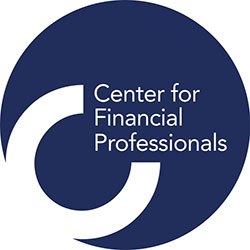The evolving payments landscape: Increasing competitiveness and upcoming regulatory deadlines

- Center for Financial Professionals, Center for Financial Professionals at Center for Financial Professionals
- 17.01.2018 12:00 pm payments
In recent years the payments landscape has evolved and transformed, in the near future it seems likely to continue to do so. 2018 is being seen as a watershed year in terms of regulatory implementation deadlines across the financial services space and the payments industry is testament to this. With the implementation of SEPA instant payments officially set for November 2017, PSD2 for January 2018 and the GDPR for May 2018 there is no doubting that payment professionals face a barrage of deadlines and challenges over the coming year. Couple this with technological advances that are constantly reinventing payments and simplifying payment processes and the continuation of digital players and FinTechs entering an already competitive market, then it is no surprise that the next 12 months will be an important one for payment professionals across the financial industry.
Due to the clear challenges, but also opportunities that payment experts face in the next year and beyond, The Center for Financial Professionals conducted extensive research with senior industry professionals to unearth the most pertinent areas facing an industry that is now worth £81 trillion in the UK alone. Many of these will be addressed at the upcoming Payments Forum 2018, taking place on February 27-28 in London. This piece will assess three of the key areas that emerged from this research as upcoming focus areas for payment professionals from financial institutions. These include the overall payments landscape, SEPA instant payments implementation and the interaction between payment and data protection laws.
What became apparent from the research is that the payments landscape is constantly evolving at a rapid pace. Payments is an area that is becoming increasingly competitive, with new digital and tech players entering the space with new innovative ideas and products. In fact, the payments space has received the largest investment as a category and is dominating the FinTech landscape, with new technologies reinventing payments, payment infrastructure and simplifying the end-to-end payment process.
The appearance of FinTechs, challenger banks and tech giants has meant we have seen a move to a more digital landscape and a general push to develop mobile banking. There is likely to continue to be less and less interaction between banks and their customers as everything is done in a remote environment. Similarly, new apps and challenger banks such as Starling Bank, Atom Bank, Revolut and Curve are entering the market as competitive forces against banks, with new products that are easy to navigate. Banks will therefore have to continue to come up with innovative ideas to maintain the trust and loyalty from their customers and retain their customer base. How banks go about competing against these new players and the new tech giants such as Apple and Amazon will be an interesting development. This is particularly challenging for banks when the regulatory environment is considered. Many suggested that there is a need for more of a level playing field. Banks have an arbitrage of regulatory guidelines to adhere to and governing bodies that they need to go through before decisions can be made. Therefore, they struggle to be as agile as FinTech companies who do not necessarily need to meet these regulations and ultimately have a competitive advantage in the payments market. It is unsurprising therefore that in order to buck this trend, banks are moving to partnering with or purchasing these FinTech companies to combat the increased competition. Many banks and fintechs are beginning to find the mutual benefits of collaborating with each other in the payments space and it seems this trend may continue over the coming years. As a whole, the payments landscape has rapidly evolved and with new players consistently entering the market banks have to navigate this competitive environment.
Whilst the payments landscape will no doubt continue to evolve over the coming years, over the next 12 months there are a number of regulatory initiatives within the payments industry that banks are understandably placing a large focus on. One such initiative is SEPA instant payments, which will be rolled out in November of this year. SEPA instant payments is the ability to make payments instantly, with transactions clearing in sub-10 seconds. Whilst instant payments are already in place in the UK and others European countries including Sweden and Denmark, November 2017 will theoretically be the first time there will be instant payments across the whole of the EU. However, there is still much for financial institutions to do and questions will arise as to the implementation uptake and initial teething problems. Brexit has thrown up a big question mark, as the UK have to negotiate a SEPA deal. With negotiations continuing into next year financial institutions will have to prepare knowing that only if the UK manages to negotiate a SEPA deal can the UK participate in SEPA instant payments cross border. Most UK and European banks have their SEPA operations in the UK, so if SEPA suddenly does not work out banks will have to migrate clients and accounts to mainland Europe, which is a potentially extensive undertaking with huge resource implications. An additional challenge for European banks in terms of SEPA instant payments implementation is having the infrastructure to operate in real time mode. Banks traditionally have legacy systems and payment engines that are batch or process driven. Therefore, moving into a new world where payments are processed in real time is a challenge for banks infrastructure to ensure systems are updated to operate in real time. In short, the industry is looking towards SEPA instant payments implementation with bated breath.
Two other regulatory initiatives due for implementation and seen as key focus areas for payment professionals and those working within data protection over the coming months are PSD2 and the GDPR. With PSD2 and GDPR implementation set for January 13th and May 25th 2018 respectively, banks continue to ensure they are ready for technical and operational implementation. However, whilst PSD2 and the GDPR pose individual challenges for the teams working on them, one area that came out of the research was around the interaction between data privacy & protection laws and payment laws. How do teams ensure they work together on the two projects and how do banks ensure the siloed teams are integrated so that the two competing projects are working with each other? Both PSD2 and the GDPR are extensive projects that require a significant amount of time, banks need to ensure they are both managed and ‘completed’ effectively. For this to be the case there has to be effective communication and interaction between teams. Additionally, it has been suggested that there are various overlaps and conflicts between the payment laws and data privacy laws, which leave some unanswered questions. For instance, how do banks monitor customer consent and who does the liability fall on if something goes wrong? The current PSD2 allows customers to give consent to a third party and not tell the banks, therefore banks need to ensure they have enough information on what their clients have consented to so that they know what type of transaction they should be vigilant about or should be blocked. Banks can get fined up to 4% of global turnover in the simple event that they continue to give their clients’ data to a third party when the client has taken away consent without the bank knowing. So, there are questions around customer consent. Therefore, the identification of obstacles in the interaction between data privacy & protection and payments laws and overcoming these obstacles is an area the industry will be focusing on over the next 12 months.
In its entirety, there has been a rapid evolution in the payments landscape and with new players continuing to enter the market, the industry seems set for further competitive pressures. Coupled with the regulatory requirements imposed on banks over the next year, there is no doubting payment professionals will be kept busy in the near future.
These are only a snapshot of some of the challenges within the payments industry. The findings of this research will be illustrated on February 27-28, 2018 at The Center for Financial Professionals Payments Forum in London. We invite you to join your peers for two days to discuss upcoming payment trends, technologies and regulatory requirements, including SEPA instant payments, PSD2 and the GDPR.
The agenda can be viewed by clicking here
For further information, please get in touch with a member of the team on +44 (0) 207 164 6582


























